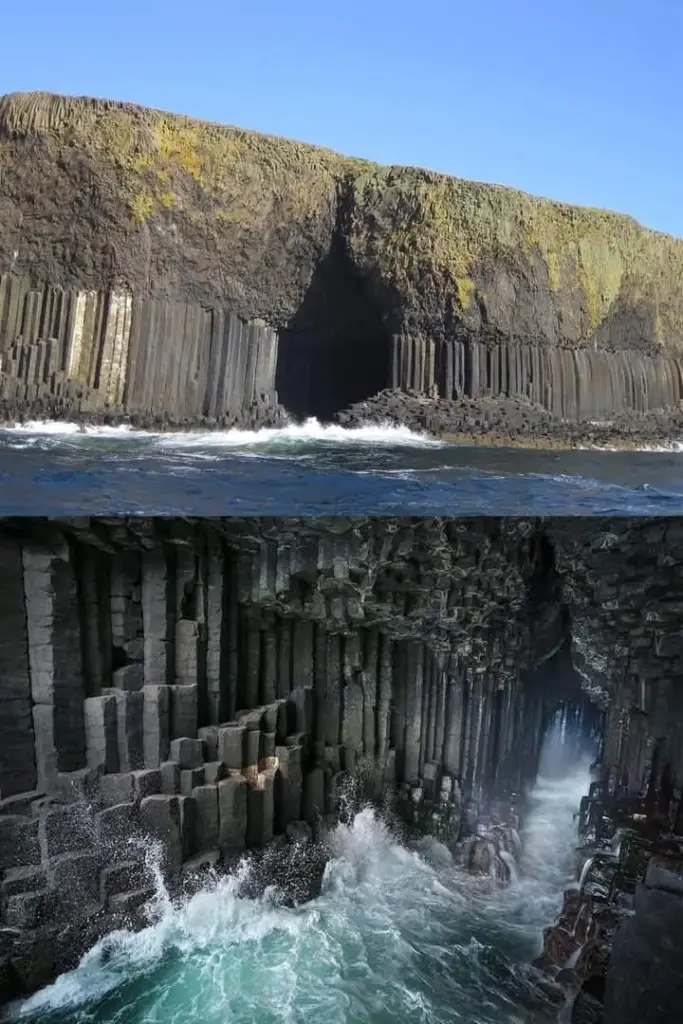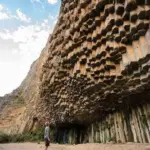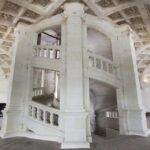Fingal’s Cave is a breathtaking geological formation located on the uninhabited island of Staffa, part of the Inner Hebrides off the coast of Scotland. Renowned for its extraordinary structure and natural acoustics, this cave has captured the imagination of artists, musicians, and explorers for centuries. Its striking basalt columns, formed from ancient volcanic activity, create a natural cathedral that continues to draw visitors from around the world.

The Geological Wonder of Fingal’s Cave
Fingal’s Cave is a product of volcanic forces that shaped the landscape millions of years ago. The cave is part of Staffa, an island formed from lava flows that cooled and solidified, creating the unique basalt columns that are the hallmark of the cave’s structure. These columns are arranged in perfect hexagonal formations, creating a mesmerizing pattern that appears almost man-made.
The columns were formed when lava, spewed by an ancient volcanic eruption, cooled rapidly in the sea. This process caused the lava to contract, leading to the formation of regular, hexagonal shapes. Over time, the sea eroded the rock, creating the cave’s impressive interior. The result is a stunning natural monument that has captivated visitors for centuries.
The cave itself stretches approximately 72 meters (236 feet) long, with a height that allows small boats to pass through its entrance. The combination of the cave’s dimensions and its unique structure creates one of the most acoustically impressive natural spaces in the world.
Natural Acoustics and the Cathedral Effect
One of the most remarkable features of Fingal’s Cave is its natural acoustics. The hexagonal basalt columns reflect sound in such a way that the cave has been likened to a grand cathedral. When waves crash against the cave’s walls, they produce haunting, echoing sounds that reverberate throughout the cavern. These acoustics give the cave an ethereal, almost otherworldly quality, drawing artists and musicians to experience its unique ambiance.
The cave’s sound has inspired many composers and musicians, the most famous being Felix Mendelssohn. In 1829, Mendelssohn visited Fingal’s Cave and was so struck by its beauty and acoustics that he composed an overture titled “Fingal’s Grotto” (also known as “The Hebrides”). The piece captures the spirit of the cave, with its ebbing and flowing melody reflecting the motion of the waves that crash against the cave’s walls. Mendelssohn’s work has since become a classic, forever linking the cave to musical history.
The Mythological Origins of the Cave’s Name
Fingal’s Cave derives its name from the legendary Irish hero Fingal (or Fionn mac Cumhaill), a central figure in Celtic mythology. According to myth, Fingal was a great warrior and hunter who led the Fianna, a group of elite warriors in ancient Ireland. The cave is said to be named after this hero, who was believed to have lived in the area.
The connection between the cave and the hero Fingal adds an element of mystique and cultural significance to the site. The story of Fingal and his adventures has inspired countless stories, poems, and works of art, and the cave serves as a tangible link to these ancient myths.
The Artistic and Literary Inspiration
Fingal’s Cave has been a muse for many artists, writers, and musicians throughout history. In addition to Mendelssohn’s famous overture, the cave has inspired visual artists, including the painter J.M.W. Turner. Turner’s atmospheric watercolors, which capture the cave’s dramatic structure and the surrounding sea, are among his best-known works.
Like Us on Facebook!
The cave has also appeared in numerous literary works, including poems and stories, with its mysterious and majestic qualities providing rich material for imagination. Writers often refer to the cave’s awe-inspiring beauty and the sense of serenity it imparts to those who visit.
Subscribe Us on YouTube!
The Enduring Appeal of Fingal’s Cave
Today, Fingal’s Cave continues to attract tourists, explorers, and nature enthusiasts from around the world. The cave’s remote location on the island of Staffa, accessible by boat from nearby islands, adds to its allure as an off-the-beaten-path destination. Visitors can explore the cave and marvel at its towering basalt columns and listen to the natural acoustics that have inspired centuries of artistic expression.
The surrounding landscape is equally stunning, with the island of Staffa offering dramatic cliffs, pristine beaches, and rich wildlife. The island is home to seabirds such as puffins and guillemots, adding a natural charm to the experience. Whether by boat or on foot, visitors can immerse themselves in the beauty of one of Scotland’s most iconic natural wonders.
Conclusion
Fingal’s Cave is more than just a geological formation; it is a symbol of nature’s power and beauty, as well as a timeless source of artistic and cultural inspiration. Its hexagonal basalt columns, formed millions of years ago, and its cathedral-like acoustics continue to captivate those who venture to see it. Whether for its natural wonder, its mythological connections, or its profound influence on art and music, Fingal’s Cave remains one of the world’s most awe-inspiring destinations.






















